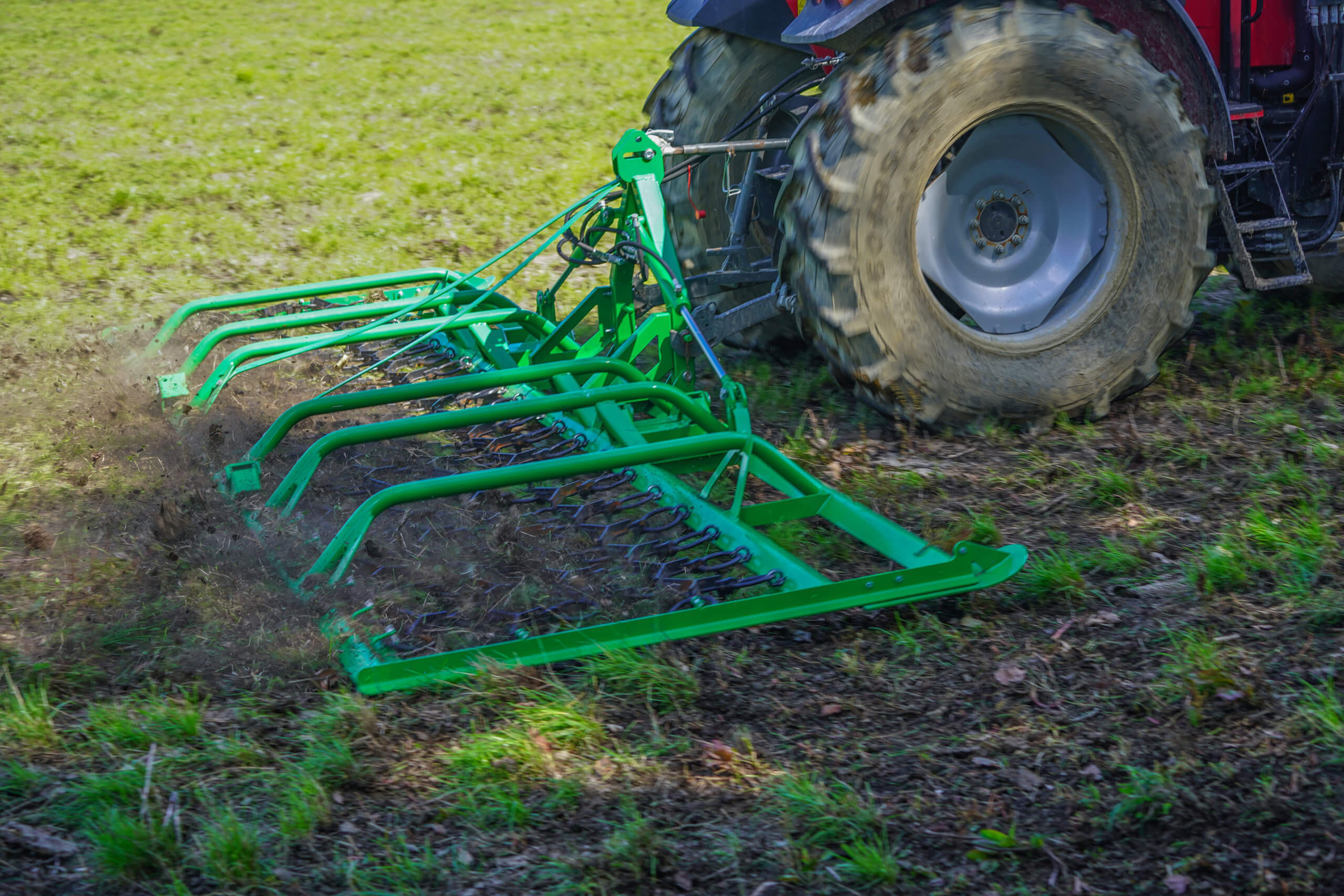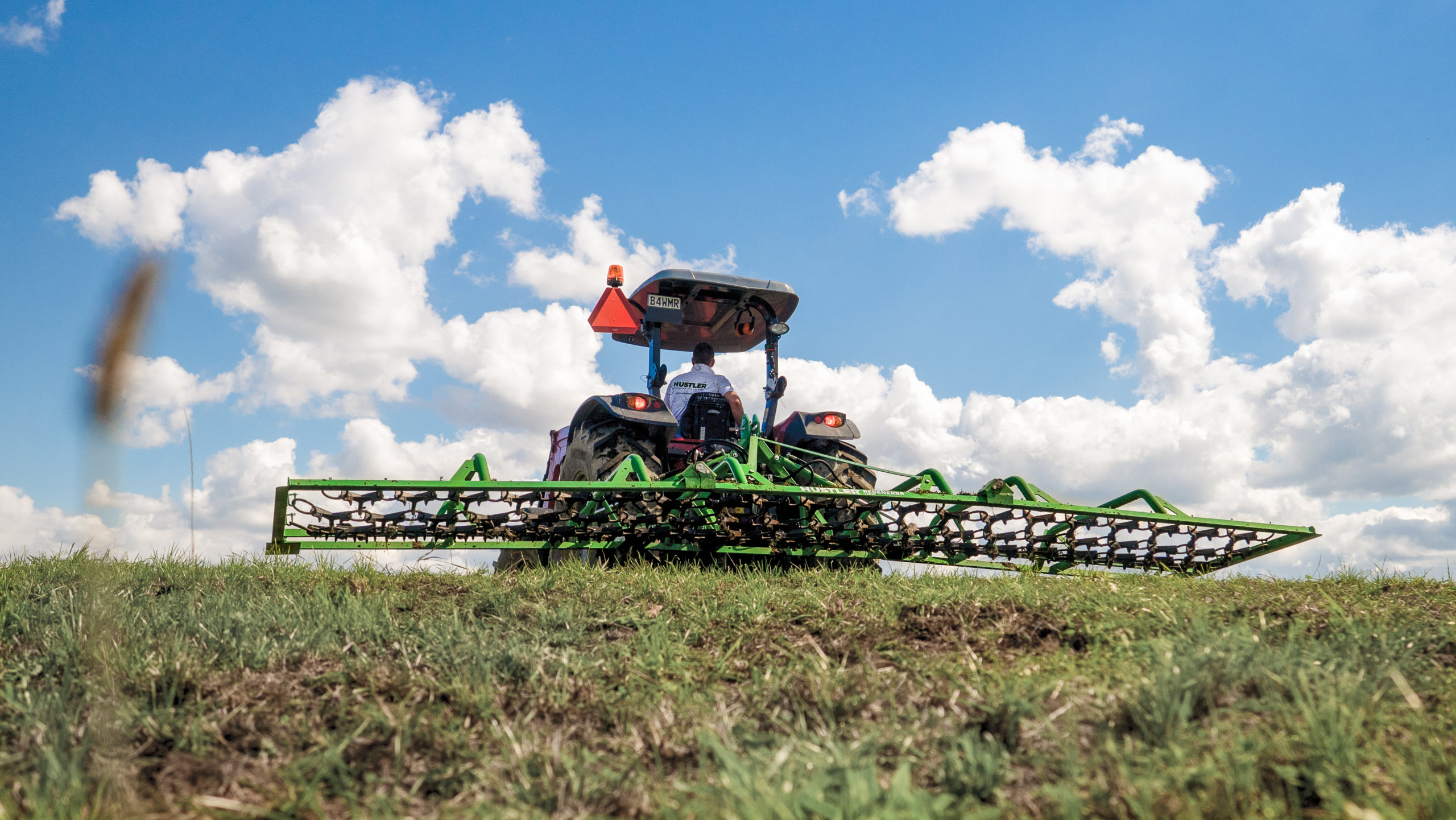Why harrow your pastures and hay fields?
To harrow or not to harrow, that is often the question!
Harrowing is definitely not new. Harrows were used in Antiquity and the Middle Ages.
In modern agriculture, harrowing is widely used in crop fields but is also growing in popularity among livestock breeders and farmers as a pasture care technique. Chain harrows in particular – known to be less disturbing for the soil than disc or spike harrows – are broadly used in pastures and hay fields to regenerate and renovate grasslands.

Chain harrows are an essential tool to regenerate your pastures
- They are used to encourage new grass growth by removing the dead grass and giving new shoots the room and oxygen they need to thrive, which also facilitates drainage, helping to minimise muddy areas and standing water;
- They are used to level out molehills and clods, to help spread manure and to smooth mowing during the spring and summer months.
- Harrowing reduces disease by exposing fungi and bacteria to sunlight which is essential for the health of the pasture.
The effect of chain harrowing:
- Breaking up and levelling heavy soil
- Removal of dead grass from the base of healthy grass and removal of lightly rooted weeds
- Spreading manure for natural fertilization
- Better seedbed or undersow preparation

When should you harrow?
So it’s not really a question of whether you should harrow or not. It’s more about what you should harrow and when you should harrow.
In spring for preparing pastures and hay fields
Chain harrowing your pastures just after winter can help to aerate and warm the soil. Quickly, the most healthy grasses will turn green first, which is going to help you to identify weak patches – you can even decide to spot under sow straight after harrowing. You can harrow your pastures in conjunction with rolling and before any fertilizer application (if any).
In autumn/fall to allow an adequate cover before the winter period
Chain harrows will not harm the existing deep-rooted grasses, and will return the pastures to uniformity before winter while preserving the grass cover before the weather turn colder and the plants go dormant.
In winter to avoid materials pilling up in some areas
In winter, the soil is often to wet/saturated to harrow without damaging the ground with tractor movement. However, if the weather is good, you can use your chain harrow to spread excess /spoiled hay.
After grazing
After moving your stock from the pasture, harrowing the whole area can be good practice for spreading out all manure piles. Manure is an excellent fertilizer that can help keep your pasture’s growth uniform and thick. This process eliminates bare spots that promote weed growth in order to maximize the grass available for when the animals eventually return.
Tips: Chain harrows were originally designed to work behind horses and it is best done at walking pace (between 3 and 4 mph) which was the average working speed of a horse.
You may also like to take a look at some of these great resources:
- The Art of Sustainable Hay Feeding in a Tough Economy
- Benefits of feeding long-stem hay, especially when weaning calves
- Does it really make sense to ground-feed onto mud?
- How to deal with hay shortage in drought conditions
- Improve your pasture for free with your bale feeding routine
Do you want to know more about regenerative practices & pasture care? Talk to our Hustler experts today!
Click here to find out more about Hustler Regener8r Chain Harrow!



























